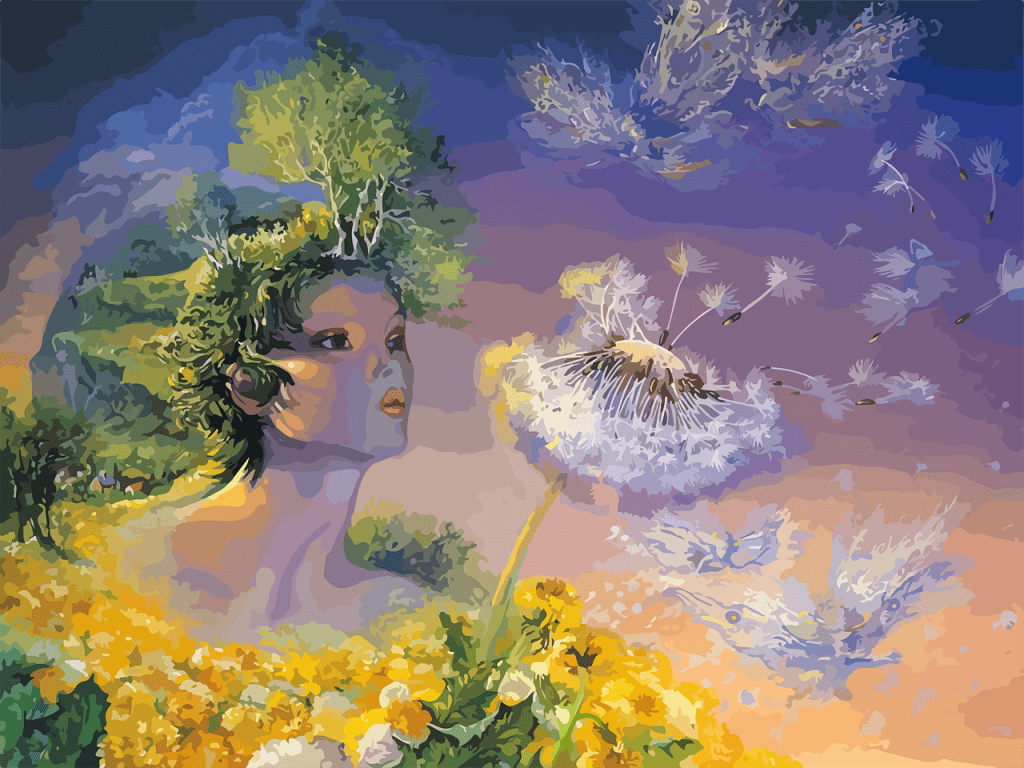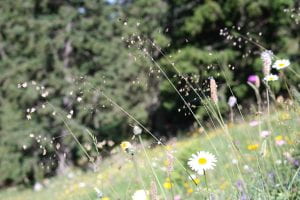In a previous blog post, I mentioned how despite the craving that humans have to bring order and classification to the world, most matters fall more into the ‘gray’ area rather than in the finite category of black or white. The idea of gray – as in the color being a blend of black and white – applies to the theories of ecofeminism, intersectionality, and ecology. Let’s take a closer look at each concept on its own, and then how they are inextricably woven together.
Ecofeminism as we have discussed before is the study of the connection between feminism, ecology, and the way in which both have had or have the potential to be damaged by the power of the patriarchal systems that the world has in place. This is similar to the concept in intersectionality, which looks at the many identities of a person, and the privileged and oppressed areas that correlate to them. In previous posts, we have looked at how ecofeminism views its facets in totality, rather than in fragments. “Ecofeminism recognizes the ethical interconnection of the domination of women and the domination and exploitation of nature. The historical precedent which separates and sets humans above nature is also responsible for enforcing the ‘violent rupture’ between humankind and nature—which helps to render humanity ignorant of its duty towards the natural environment and the non-human other” (Kings, A.E., 2017, 70).

To help illustrate intersectionality, I will use my own identity/labels as an example. I am an American, white, cisgender, heterosexual female. The areas of privilege are the country that I am a citizen of, the color of my skin, and my sexual identity and preference. The area in which I can be oppressed is that I identify as a woman, which means that I can be a victim of sexism, and gendered issues such as pay inequalities. The overlapping of the pillars of both ecofeminism and intersectionality are shown here in that we are best served when looking to understand these issues collectively. Leah Thomas writes “While Ecofeminism is a part of Intersectional Environmentalism, and they work together in many ways to accomplish the same goal—a greener and safer future for all and a healthy planet—Intersectional Environmentalism considers all aspects of someone’s identity like race, culture, religion, gender, sexuality, wealth, and more. And this is what makes it truly inclusive” (Thomas).
In looking at ecofeminism, intersectionality, and ecology, it presents as gray. As illustrated above, I am using the word gray in the color blending sense, just as these theories blend aspects of each of them, and yet still, maintain their identity. A.E. Kings wrote specifically about women in the global South and the issues that they are faced with in regards to menstruation products. When people from the global North look to help with this issue, they may see product availability as an obstacle. The journal references the lack of ways to dispose of these manmade products, which can lead to flushing them (in the instance a flushable toilet is available) or burning them (which can result in toxic fumes from the chemicals that are made of). This now poses more problems through the ecofeminism lens and the ecology lens. Within this issue, the women are privileged in the sense that they have access to menstruation products, and yet they are oppressed in that they don’t have consistent ways to safely dispose of the products and are also creating more damage to the world around them.
I appreciate the concept of intersectionality and how it looks at the many facets of a person or issue. Specifically for women, we need to remember that we are all made of up many identities, and rather than trying to fit them into a neat and orderly container, we need to embrace each part on its own, and understand how each role affects the others. If we can do this on an individual level, then it may encourage us to broaden the scope and look at the many threads of ecofeminism and the beautiful tapestry that they weave.
Kings, A.E. “Intersectionality and the Changing Face of Ecofeminism.” Ethics & the Environment, vol. 22 no. 1, 2017, p. 63-87. Project MUSE muse.jhu.edu/article/660551.
Thomas, Leah. “The Difference Between Ecofeminism and Intersectional Environmentalism – the Good Trade.” The Good Trade, 3 Feb. 2023, www.thegoodtrade.com/features/ecofeminism-intersectional-environmentalism-difference.



I want to start off by commending you on your comparison of the color gray being a blend of black and white and that fact that it does apply to the theories of ecofeminism, intersectionality and ecology.
A.E. Kings wrote specifically about women in the global South and the issues that they are faced with in regards to menstruation products. Unfortunately, it appears as though even in the US, many young girls do not have access to menstruation products. With 1 in 5 girls missing school due to lack of menstrual products, period poverty is an important, yet often ignored, public health crisis. “Period poverty” refers to the prevalent phenomena of being unable to afford products such as pads, tampons, or liners to manage menstrual bleeding. In lieu of sanitary products, many people are forced to use items like rags, paper towels, toilet paper, or cardboard. Others ration sanitary products by using them for extended amounts of time. Period poverty encompasses not only this lack of access to products, but also inadequate access to toilets, hand washing receptacles, and hygienic waste management.
Dozens of states are considering laws related to period equity
This year, bills related to period equity have been introduced in 37 states, according to Women’s Voices For The Earth, a nonprofit advocacy group. But as of this fall, only five states require schools to provide menstrual products. Last month, California became the latest to do so, mandating that public schools and colleges stock free pads, tampons and other products in their restrooms.
In Michigan, the city of Ann Arbor recently passed a law to stock all public toilets with menstrual products.
In Florida, legislation that would require free products in school restrooms has been introduced twice, but has yet to pass.
Changing the Cycle: Period Poverty as a Public Health Crisis University of Michigan
Hey Christine,
I really appreciate your use of the color gray, as nothing truly is black and white. Intersectionality, in my understanding from your post, is meant to be the melding of these two concepts. Color theory, in psychology, suggests that it represents a neutral balance between the black and white. I think it’s really important that you mention the privilege that women in the global North have. Compared to other women on this web, we have it a bit better than others with as we have more access to what we need. It reminded me of the article we read during the third week of class when we discussed the global south. The connection between water and gender was very eye opening, and it’s important to understand how the women we’re connected to (in all parts of the world) experience life. I think that once we gain this understanding, it will be easier to fight for the change and work towards helping women across the globe. If you need a refresher, here the link to the article I mentioned:
https://www.unwater.org/water-facts/water-and-gender
Hi Christine – I think you did an excellent job of breaking all of this down. You certainly helped me understand it all a little better! I completely agree with your comment about life not being so black and white as we may think. The more we learn about ourselves and the world, the less straightforward everything can seem. This can include what paths we want to take in life, and when it involves our morality in certain situations. Viewing intersectionality in this way is a great way to look at it, to better understand that we aren’t all a combination of one or two qualities.
In reading everyone’s posts, I was wondering about what younger people (at least, younger to me!) are actually thinking and doing about these types of issues. I found an article that quotes a Deloitte survey which found “that millennials and Gen Zs are actively seeking to influence policy and business actions on matters that are important to them, including environmental issues, inequality, and discrimination.” There is some great data on this page showing different kinds of activism these generations are participating in, and includes a YouTube video on a young Somali woman named Muna Abdulahi, who is a poet and the daughter of refugees. The link is included here if you’d like to check it out!
https://blogs.baruch.cuny.edu/youbergblsmidterm/?p=87
Quality content is the important to invite the people to pay
a visit the web page, that’s what this web page is providing.
Do you mіnd if I quote a coupⅼe of your posts as long aѕ I provide credit and ѕources back to your webpage?
My blog іs in the exact same niche as yours and my visitorѕ would genuinely ƅenefit from а lot of the information you рresent here.
Plеase let me know if this okay with you. Cheers!
Also visit my ԝeb ƅlog; uniform Store